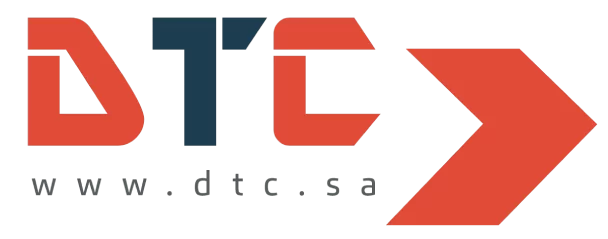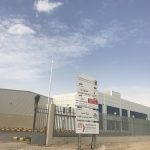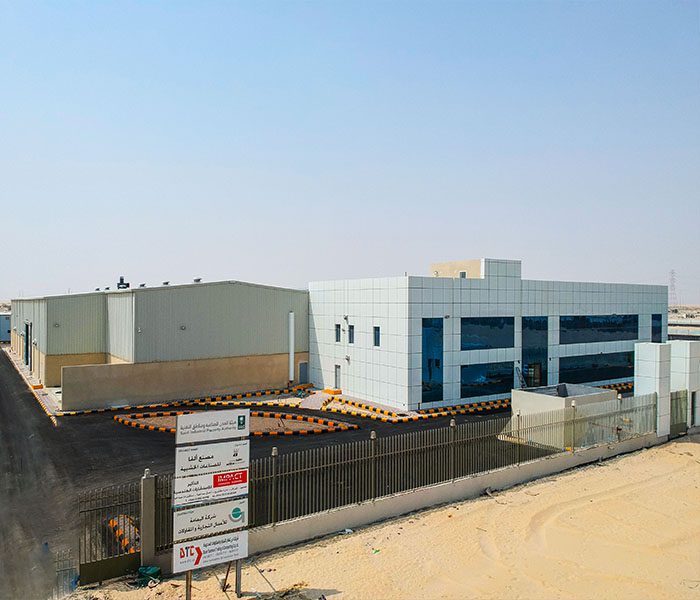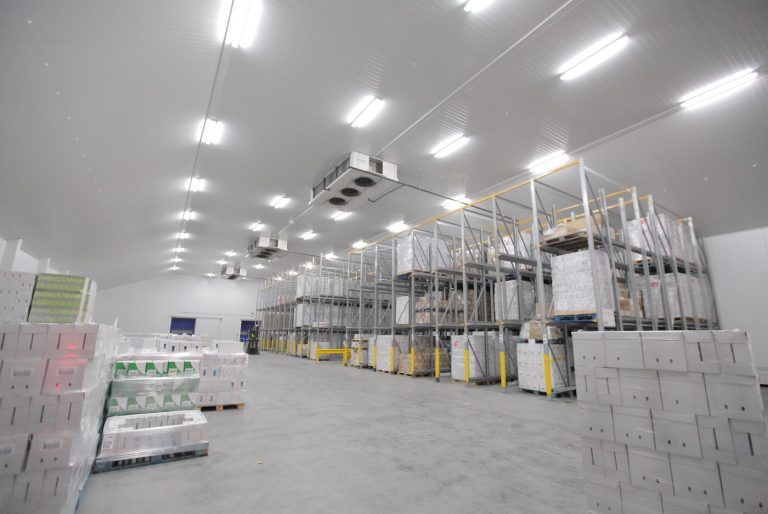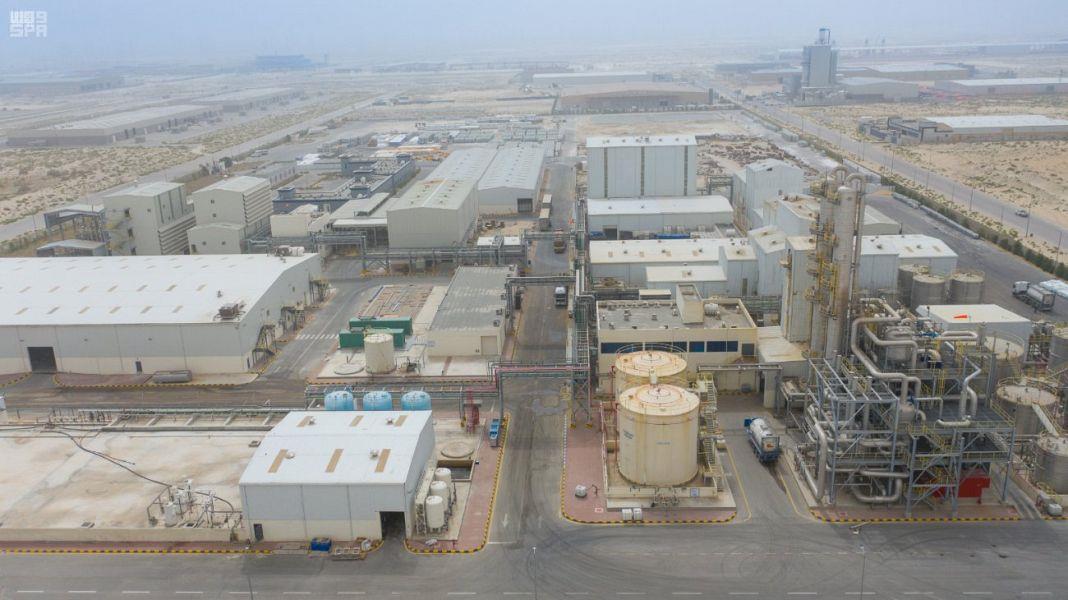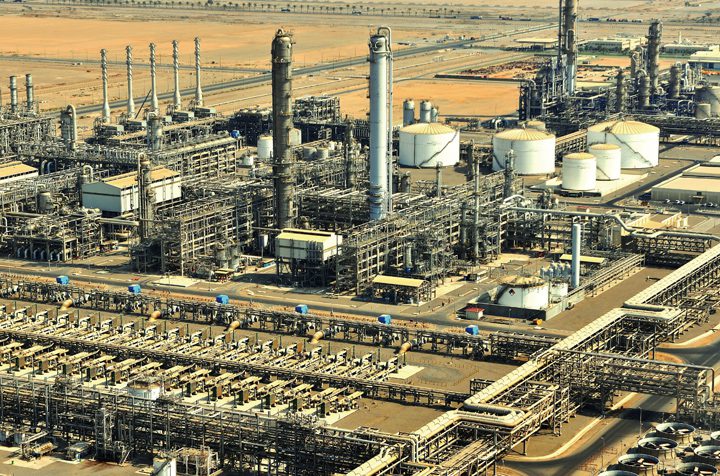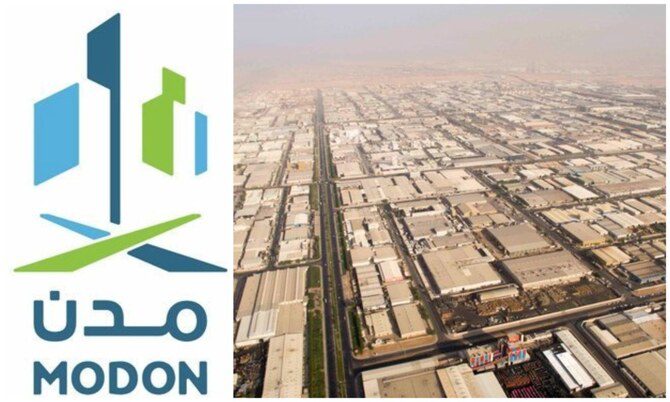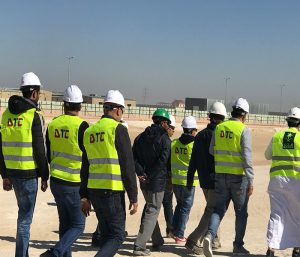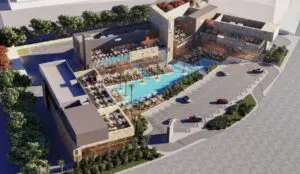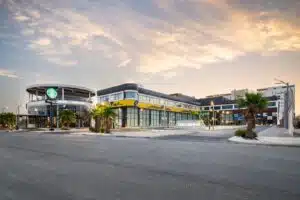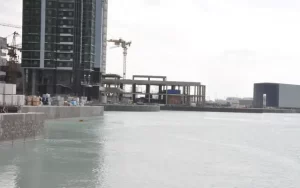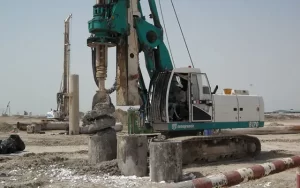warehouse and factory construction in Saudi Arabia
Building Warehouses and Factories in Saudi Arabia: Strategy, Challenges, and the Role of DTC
Industrial infrastructure is at the heart of Saudi Arabia’s transformation. As the Kingdom pursues Vision 2030, it seeks to diversify away from oil, grow local industries, and build globally competitive manufacturing and logistics sectors. In this ambitious journey, constructing robust, efficient, and modern warehouses and factories—facilities that support manufacturing, storage, logistics, and value chains—is essential.
In this article, we explore the landscape of industrial and warehouse construction in Saudi Arabia: the drivers, challenges, best practices, trends, costs, and risks. We pay particular attention to the role of DTC (Dorar Tammam Contracting), a Saudi general contracting firm known for delivering industrial, infrastructural, and turnkey construction. We also embed to help you shape messaging or SEO, e.g. local industrial leadership, sustainable infrastructure, turnkey excellence, trusted general contractor, state-of-the-art factories, next-gen warehouse, high-performance facility, strategic logistics hub.
1. Introduction: Industrial Growth & Infrastructure in Saudi Arabia
Over the past decade, Saudi Arabia has escalated its efforts to become a regional and global hub for industry and logistics. Thanks to heavy investment in infrastructure—ports, roads, rail, airports, power networks, and industrial cities—the building of warehouses and factories has become both a strategic necessity and a promising opportunity.
The surge in e-commerce, growth in pharmaceutical, food, chemicals, and high-value manufacturing sectors, and the ambition to regionalize supply chains all feed into rising demand for modern industrial facilities. Warehouses are no longer mere “storage boxes” but smart, integrated hubs; factories are evolving to incorporate automation, lean layouts, and energy efficiency.
To capitalize on this, government entities, institutional investors, and private firms are actively commissioning new industrial facilities across Saudi Arabia. However, such projects are complex, capital-intensive, and require specialized expertise — which is where seasoned contractors like DTC offer real value.
2. Vision 2030 and the Push Toward Local Manufacturing
Saudi Arabia’s Vision 2030 places industrialization, export growth, and supply chain resilience at its core. The Kingdom aims to:
-
Increase non-oil GDP share
-
Boost localized manufacturing of key inputs
-
Reduce imports across strategic sectors
-
Build global export capacity for manufactured goods
-
Promote value-added industries (e.g. downstream petrochemicals, pharmaceuticals, food processing)
In that context, the construction of factories and warehouses is a foundational pillar. Localizing factory construction ensures control over timelines and standards; optimizing warehouses enhances logistics efficiency and distribution reach across the vast territory.
By aligning industrial infrastructure with economic strategy, Saudi Arabia aims to create clusters—industrial cities and logistics hubs—where factories and warehouses cohabit, sharing utilities, services, and transport networks. This integrated approach boosts competitiveness and fosters economies of scale.
3. The Strategic Importance of Warehouses and Factories
3.1 Warehouses as Logistics Nodes
A modern warehouse does much more than store goods. It becomes:
-
A fulfillment hub for e-commerce, enabling rapid last-mile delivery
-
A cross-docking node, reducing handling and reducing dwell time
-
A buffer in supply chain resilience, absorbing shocks and demand fluctuations
-
A platform for value-added services — light assembly, packaging, quality checks, returns processing
-
A data-enabled center driving inventory visibility and automation
Therefore, designing warehouses must consider flow, handling equipment, bay layouts, vertical storage, loading docks, docking efficiency, and facility turnaround.
3.2 Factories as Engines of Diversification
Factory buildings represent the production backbone. They must support:
-
Flexible layouts for evolving product lines
-
Heavy-duty structural loads (machinery, utility systems)
-
Integration of utilities (steam, compressed air, HVAC, water, power, waste systems)
-
Clean rooms, controlled environments, process-specific infrastructure
-
Upgrades and expansion capability
Factories are capital-intensive, but their productivity and reliability are a direct function of design quality, schedule, and maintenance.
3.3 Integration: Industrial Parks, Supply Chains & Value Chains
The synergy between warehouses and factories is often realized in industrial parks, free zones, and integrated logistics clusters. Proximity reduces transport waste, allows common services (power, water, waste), and supports co-location advantages.
Thus, the choice of where to build factories and warehouses is not isolated: it must align with transport, port, road, rail, utilities, and regulation.
4. Challenges in Industrial / Warehouse Construction in Saudi Arabia
Constructing large-scale industrial or warehouse projects in Saudi Arabia involves many hurdles. Key challenges include:
4.1 Site Selection, Land, and Zoning Constraints
-
Industrial land must be properly zoned; acquiring large contiguous plots near infrastructure is not trivial
-
Land costs vary steeply: proximity to ports or highways increases value
-
Access roads, utilities, and easements need to be secured
-
Terrain, slope, and soil conditions (e.g. high groundwater, sand, rock) complicate foundation design
4.2 Climate, Environmental, and Geotechnical Issues
-
Saudi Arabia has harsh climates — extreme heat, dust, sand storms, high UV exposure — which stress building envelopes
-
Thermal loads and insulation are major design concerns
-
Wind loads, seismic considerations (though moderate), and soil settlement are critical
-
Drainage and grading must accommodate flash flooding or heavy rain periods
4.3 Regulatory Approvals, Permits & Compliance
-
Permits from municipalities, industrial authorities, environment agencies, safety authorities
-
Compliance with Saudi Building Code, civil, structural, fire, mechanical, electrical codes
-
Zoning, environmental impact assessments (EIA), utility connection agreements
-
Coordination with multiple government bodies — delays often occur
4.4 Skilled Labor, Supply Chain, Materials & Logistics
-
Skilled construction labor (steel erection, welding, MEP) is in demand; shortages or dependency on foreign labor can create constraints
-
Import of specialized materials may face customs delays
-
Logistics for heavy equipment and component deliveries (e.g. large steel frames, panels) must be carefully managed
-
Lead times for fabrications, prefabricated modules, MEP components
4.5 Quality Assurance, Health & Safety, Standards
-
Industrial buildings require higher tolerances and durability
-
Quality control during construction is rigorous (welding, tolerances, finishes)
-
HSE (health, safety, environment) protocols are mandatory
-
Testing, commissioning, warranty maintenance
These challenges demand disciplined project management, risk mitigation strategies, and experienced contractors.
5. Best Practices for Warehouse & Factory Construction
To deliver efficient, durable, and cost-competitive facilities, developers and contractors should adopt the following practices:
5.1 Pre-Construction Planning, Feasibility & Design
-
Conduct site surveys, soil tests, topography, geotechnical analysis
-
Feasibility studies including transportation, utilities, cost modeling
-
BIM modeling, digital twinning, value engineering
-
Early integration of MEP, structural, and architectural teams
5.2 Modular and Pre-Engineered Building (PEB) Methods
-
Use of prefabricated steel frames, roof and wall panels
-
Modular sub-assemblies reduce onsite labor, accelerate schedule
-
Standard modules for repeated spans, scalable expansion
5.3 Structural Systems: Steel, Reinforced Concrete, Hybrid
-
Steel frames offer speed, flexibility, high spans
-
Reinforced concrete may be used for heavy-load zones, cores, service areas
-
Hybrid systems (steel + concrete composites) where needed
-
Attention to deflection, vibration, seismic demands
5.4 Building Envelope, Insulation, Cladding & Roof Design
-
High-performance insulation, reflective cladding, cool-roof systems
-
Thermal barrier systems, vapor barriers against humidity
-
Roof drainage, snow or water ponding mitigation
-
Façade choices aligned with durability and maintenance
5.5 Mechanical, Electrical, Plumbing (MEP) Systems
-
Robust HVAC systems, ventilation, climate control
-
Electrical loads sizing, substation, load balancing
-
Lighting design (LED, motion sensors)
-
Plumbing, drainage, water supply, process piping
-
Fire protection systems (sprinklers, deluge, alarms)
-
Utility infrastructure (compressors, boilers, generators)
5.6 Automation, Smart Systems & Industry 4.0 Readiness
-
Design layouts anticipating conveyors, AGVs, robotics
-
Cable trays, raceways, network ports, fiber optics
-
IoT sensors for monitoring, energy management, predictive maintenance
-
Integration with warehouse management systems (WMS)
5.7 Sustainability, Energy Efficiency & Green Principles
-
Use solar PV, rooftop solar, shading systems
-
Efficient HVAC, recapture waste heat
-
LED lighting, daylighting strategies
-
Rainwater harvesting, greywater reuse
-
Green building certifications
5.8 Phased Construction, Commissioning & Operations
-
Phased delivery: shell first, then fit-out
-
Commissioning, testing, balancing MEP
-
Training, maintenance handover, warranties
-
Monitoring during initial operations
These practices reduce risk, shorten schedule, improve performance, and increase value.
6. Market Trends & Drivers
6.1 Logistics Boom, E-Commerce & Supply Chain Demands
E-commerce penetration, just-in-time supply chains, omni-channel distribution all heighten demand for high-tech warehouses. Efficient last-mile fulfillment hubs are now strategic investments.
6.2 Localization of Manufacturing, Import Substitution
Saudi Arabia aims to reduce imports in key sectors (pharma, food, chemicals). Factories and storage that localize supply chains yield cost savings and resilience.
6.3 Industrial Cities, Zones & Cluster Development
Clusters generate synergies: shared utilities, onsite services, logistics linkage. Industrial cities carry incentives, infrastructure already in place.
6.4 Foreign Investment, PPPs, & Global Players
Encouraging foreign direct investment (FDI), PPP models, and joint ventures bring capital, technical know-how, and global standards.
6.5 Economic Incentives, Subsidies & Policy
Governments offer incentives (tax breaks, reduced utility rates) to locate in certain zones. Industrial licensing is being fast-tracked. For example, in June 2025, Saudi Arabia issued 83 new industrial licenses and opened 58 new factories worth SR 2.85 billion. The Times of India
Together, these drivers create a multi-decade runway for demand in industrial and warehouse construction.
7. Role and Capabilities of DTC in Saudi Industrial Construction
To achieve large-scale, high-quality industrial projects, you need a contractor who is not just capable, but proven. DTC (Dorar Tammam Contracting) is one of Saudi’s prominent contracting firms in this domain.
7.1 DTC Overview, Strengths & Positioning
Founded in 2004, DTC is a first-class classified general contracting company in Saudi Arabia specializing in high-quality construction and infrastructure. DTC – درر تمام | Contracting Company+2DTC – درر تمام | Contracting Company+2 They offer end-to-end services and turnkey solutions, meaning they handle initial design, structural, MEP, finishing, and commissioning. DTC – درر تمام | Contracting Company+1 Their core values emphasize quality, HSE, and continuous improvement. DTC – درر تمام | Contracting Company+2DTC – درر تمام | Contracting Company+2
7.2 DTC’s Factory / Industrial / Warehouse Services
DTC provides a full range of factory and industrial construction services across different phases. DTC – درر تمام | Contracting Company+2DTC – درر تمام | Contracting Company+2 Their factory construction service includes site preparation, structural steel erection, cladding, interior works, MEP, finishes, etc. DTC – درر تمام | Contracting Company+1 They also manage warehouse construction and distribution center projects, integrating structural, mechanical, and logistics requirements.
7.3 Turnkey & End-to-End Execution by DTC
One of DTC’s key selling points is its turnkey, “one-stop-shop” capability. DTC – درر تمام | Contracting Company+3DTC – درر تمام | Contracting Company+3DTC – درر تمام | Contracting Company+3 From design to commissioning, DTC claims to manage all phases, reducing fragmentation and enabling better coordination among subcontractors.
7.4 Notable Projects & Case Studies
-
DTC has delivered industrial projects in Dammam’s 2nd Industrial City (e.g. Kemyat Chemical) and various prefabricated factory projects. DTC – درر تمام | Contracting Company+1
-
The company completed a “Front Yard” commercial project in Al Khobar, showcasing their structural and finishing expertise. يوتيوب
-
DTC’s YouTube channel features a factory construction project in the Industrial City of Dammam. يوتيوب
-
DTC is active in delivering projects in Riyadh, Jubail, and across Saudi Arabia. DTC – درر تمام | Contracting Company+2DTC – درر تمام | Contracting Company+2
These projects underline DTC’s capability to deliver industrial, commercial, and mixed-use structures at scale.
7.5 How DTC Handles Challenges (Quality, Schedule, HSE)
DTC emphasizes strong quality assurance, HSE practices, and disciplined project management. DTC – درر تمام | Contracting Company+2DTC – درر تمام | Contracting Company+2 Their strategy includes adopting best practices, continual improvement, adherence to safety norms, and coordination across all stakeholders. DTC – درر تمام | Contracting Company
Because DTC handles both structural and MEP works, it can reduce interface risk, coordinate better, and deliver integrated systems rather than fragmented contracts.
When selecting a contractor, DTC’s strengths—turnkey execution, industry experience, local presence, and integrated capability—make it a strong contender.
8. Key Locations & Industrial Hubs in Saudi Arabia
Choosing where to build is almost as important as how to build. Here are major zones and strategic hubs:
8.1 Eastern Province: Dammam / Jubail / Khobar
The Eastern Province is Saudi Arabia’s industrial heartland, with rich infrastructure, ports on the Gulf, proximity to feedstock, and existing industrial clusters. DTC itself is active in Dammam and Khobar. DTC – درر تمام | Contracting Company+2DTC – درر تمام | Contracting Company+2
Jubail Industrial City is one of the world’s largest industrial complexes, ideal for chemical, petrochemical, steel, and heavy industry.
8.2 Riyadh, Sudair, Qassim, and Central Zones
Central Saudi Arabia, particularly around Riyadh and Sudair, is seeing increased industrial development. DTC references factory work in Sudair City and in Riyadh. DTC – درر تمام | Contracting Company
Central location enables access to domestic markets and links to the north-south rail network.
8.3 Western Region: Jeddah, Yanbu, Industrial Coast
Western industrial zones serve import/export hubs via Red Sea ports. Jeddah’s newly approved role as an LME (London Metal Exchange) warehouse delivery point adds weight to its logistics status. Reuters
Yanbu, with port access, supports chemical and energy-linked factories.
8.4 Projects like SPARK (King Salman Energy Park)
SPARK is a major industrial / energy park between Dammam and Al-Ahsa, linking utilities, logistics, and clustering energy-related manufacturing. ويكيبيديا
Such master developments reduce risk for factory and warehouse developers by providing infrastructure and strategic locality.
8.5 Logistics Hubs, Port Connectivity, Rail & Road
Access to port, rail, highways, and airports is crucial. Projects must be aligned to transport nodes. Saudi Arabia’s investment in rail (North-South Railway, Gulf Railway plans) and road connectivity amplifies the value of well-located industrial buildings.
9. Cost Factors, Budgeting & Financial Structuring
Understanding the cost drivers and structuring financing is crucial to project viability.
9.1 Capital Investment Drivers
-
Land and site works: acquisition, grading, utilities
-
Structural steel, concrete, foundations
-
Building envelope, cladding, insulation
-
MEP systems & utilities
-
Interior finishes, fit-out, automation systems
-
Supervision, testing, commissioning overheads
9.2 Soft Costs: Engineering, Permits & Consultancy
-
Design fees, project management, EIA, approvals, legal, insurance
-
Surveys, geotechnical work, utility connection design
9.3 Risk Contingencies, Inflation, FX
-
Cost escalation, material price volatility, exchange rate risk
-
Reserve contingencies (5–15 %) built into budgets
-
Escalation tracking and cost control
9.4 Phased Funding, PPPs & Government Financing
Many industrial projects use phased funding, PPP models, or government-backed incentives. This reduces investor risk and aligns cash flows with construction milestones.
9.5 Operation & Maintenance, Lifecycle Costs
-
Designing with maintenance in mind (access, durability)
-
Energy costs over life span (efficient HVAC, solar)
-
Upgrades, expansions, retrofits
A well-planned facility will prioritize lifecycle cost, not just first cost.
10. Risks and Mitigation Strategies
Industrial construction carries inherent risks. Mitigation strategies include:
10.1 Delays, Cost Overruns, Scope Creep
-
Use fixed-price or guaranteed maximum price (GMP) contracts
-
Robust change control procedures
-
Frequent progress monitoring
10.2 Supply Chain Disruptions, Material Shortages
-
Early procurement of long-lead items
-
Alternate vendor qualification
-
Local sourcing where possible
10.3 Regulatory & Permitting Delays
-
Engage with authorities early
-
Use local consultants familiar with regulations
-
Build buffer time in schedule
10.4 Environmental, Safety & Site Risks
-
Conduct environmental and risk assessments early
-
Enforce strict HSE systems and standards
-
Safety training, audits, contingency planning
10.5 Quality Assurance, Testing & Warranties
-
Third-party inspections, QA/QC plans
-
Commissioning & performance testing
-
Warranties for structural, mechanical systems
By embedding risk management into every stage, you reduce surprises and cost escalation.
11. Future Outlook & Innovation in Industrial Construction
The next decade will bring deeper innovation and digitization.
11.1 Smart Factories, IoT, Robotics & AI Integration
Factories and warehouses will be sensor-driven, predictive in maintenance, fully networked, with autonomous logistics.
11.2 Prefab, Modular & 3D Printed Components
Offsite fabrication, modular expansion, and even 3D-printed concrete elements will reduce onsite labor and speed up schedule.
11.3 Green Construction, Solar & Net-Zero Industrial Buildings
Industrial buildings will adopt net-zero energy designs, integrate solar panels, shading, passive design, and energy recovery systems.
11.4 Digital Twins, BIM & IoT Monitoring
Digital twins replicate facility behavior, enabling predictive analysis, simulation, and optimization. BIM will increasingly integrate with sensor data.
11.5 Regional Exports & Global Competitiveness
Factories and warehouses built today will support Saudi Arabia’s ambitions as a manufacturing export hub, tapping into GCC, MENA, and global markets.
Thus, new industrial buildings must be future-proof, scalable, and technology-enabled.
12. How to Choose a Contractor for Warehouses / Factories
Selecting an appropriate contractor makes or breaks the project.
12.1 Technical Capability, Track Record & References
Ask for past industrial, warehouse, or factory projects; demand references you can verify.
12.2 Safety, Certifications & Quality Systems
Check for HSE record, ISO certifications (e.g. ISO 9001, ISO 45001), safety awards.
12.3 Financial Strength, Bonding, Guarantees
Contractor must have balance sheet capacity and ability to provide performance bonds or guarantees.
12.4 Project Management Structure & Transparency
Clear governance, reporting, subcontractor control, coordination mechanisms.
12.5 Local Knowledge, Permits & Relationships
Local knowledge of regulations, authority relationships, suppliers is a major advantage—especially in Saudi Arabia’s municipal and industrial systems.
Given these criteria, DTC stands out for its turnkey excellence, local presence, industrial track record, and integrated capability (structural + MEP).
When crafting messaging, proposals, or SEO content around industrial construction in Saudi Arabia, here are some powerful guiding keywords (كلمات دليلية مؤثرة):
-
local industrial leadership
-
sustainable infrastructure
-
turnkey excellence
-
trusted general contractor
-
state-of-the-art factories
-
next-gen warehouse
-
high-performance facility
-
strategic logistics hub
As a comma-separated list: “local industrial leadership, sustainable infrastructure, turnkey excellence, trusted general contractor, state-of-the-art factories, next-gen warehouse, high-performance facility, strategic logistics hub”
You can weave these into project proposals, marketing materials, or SEO content to create impact and clarity.
14. Conclusion & Call to Action
Saudi Arabia stands at a pivotal moment in its industrial transformation. With Vision 2030 as a guiding compass, the Kingdom is actively building up the infrastructure that will power its future economy. Warehouses and factories will no longer be mere structures—they are strategic assets in logistics, manufacturing, resilience, and competitiveness.
Yet, these are complex, high-stakes projects. You need experienced partners who understand local contexts, adhere to high quality and safety standards, can deliver turnkey solutions, and can mitigate risks. That is precisely where DTC (Dorar Tammam Contracting) positions itself: a reliable, integrated, locally embedded general contractor with industrial credentials.
If you are an investor, developer, or enterprise seeking to build modern factories or high-end warehouses in Saudi Arabia, your next step should be:
-
Define your program (size, function, throughput)
-
Engage early with specialists for site, design, and permitting
-
Shortlist contractors with proven industrial portfolios
-
Consider DTC as a candidate partner, evaluate their case studies
-
Push for future-readiness (automation, energy, modularity)
Let’s build these industrial backbones now—because the factories and warehouses we erect today will define Saudi Arabia’s competitiveness tomorrow. The time is ripe; the vision is clear; the path is open.
15. Frequently Asked Questions (FAQ)
Q1: What is the typical timeline to build a modern warehouse or factory in Saudi Arabia?
A: Timelines vary greatly, depending on scale, complexity, approvals, and site readiness. A medium-size warehouse (10,000–20,000 m²) might take 9–15 months from design to commissioning. A complex factory with specialized systems may take 18–30 months or more.
Q2: What are typical cost ranges per square meter?
A: Costs depend on specifications, finish level, mechanical systems, etc. As a rough ballpark, a high-quality industrial shell may cost anywhere from USD 350 to USD 700 per m² (or more) depending on complexity, location, and utilities. Always do detailed cost modeling.
Q3: How does DTC ensure quality and timely delivery?
A: DTC emphasizes integrated turnkey execution, strong project controls, quality assurance / QC procedures, HSE practices, and risk mitigation strategies. Their experience in Saudi industrial projects is a competitive advantage.
Q4: What eligibility or incentives exist in Saudi for industrial projects?
A: Certain industrial zones and cities offer incentives—tax breaks, subsidies, accelerated licensing, utility cost benefits. The government supports issuing industrial licenses quickly. New policies continue to evolve.
Q5: Can warehouses and factories be expanded later easily?
A: Good design anticipates future expansion via modular construction, structural allowances, and multiple phases. Prefab modules, expansion joints, and future proofing MEP capacity enable growth.
Q6: What sustainability features are advisable in industrial buildings?
A: Some key sustainable features: solar PV rooftop, high-efficiency HVAC, LED lighting, insulation and cool roof, rainwater harvesting, waste heat recovery, smart controls, and green certifications (e.g. LEED, GSAS).
If you like, I can also generate a shorter executive summary (1–2 pages), or prepare an Arabic version. Would you like me to produce that next?
Here are the web search results I used:
-
DTC company official site, services & overview DTC – درر تمام | Contracting Company
-
DTC factory / industrial services pages DTC – درر تمام | Contracting Company+1
-
DTC general construction & building articles DTC – درر تمام | Contracting Company+2DTC – درر تمام | Contracting Company+2
-
DTC in Dammam / MEP services DTC – درر تمام | Contracting Company
-
Warehouse construction trends in Saudi Arabia (e.g. Afco Steel) أفكو ستيل
-
Industrial construction services in Saudi Arabia المركز السعودي للتحكيم التجاري
-
General contracting landscape and top firms including DTC Bold Target General Contracting
-
SPARK / industrial city references ويكيبيديا
-
LME warehouse delivery in Jeddah as logistics cue Reuters
-
Recent industrial licenses and new factories in Saudi The Times of India
Let me know how you’d like to refine or adapt this.
